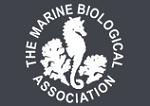APHOTOMARINE
An educational resource dedicated mainly to the photography
and diversity of marine life that can be found in coastal waters
and intertidal areas of Great Britain and Ireland by David Fenwick.

Sertularia argentea or
S. cupressina
- hydrothecae 1
Sertulariid hydroid
Sertularia argentea or
S. cupressina
- habit and shape 1
Sertulariid hydroid
Sertularia argentea or
S. cupressina
- habit and shape 2
Specimen above was found cast up on the strandline after a storm at Gwithian, Cornwall, 26.02.14.
The specimen here looked a little odd, hydroid expert Dr. Peter Schuchert kindly explained why.
The specimen is a young Sertularia argentea or S. cuppressina, on which is growing another, stolonial hydroid, with hydrotheca. The stolonial hydroid looks like Campanulina pumila, but it is impossible to tell without seeing the rim of its hydrotheca. The hydrotheca of the stolonial hydroid, should not be confused with gonothecae of Sertularia argentea or S. cuppressina which are not present.
APHOTOMARINE supports open source data recording and sharing for the benefit of wildlife, recorders, research, science and education. The project recommends the following websites and works with the following bodies and organisations.
The Marine Biological Association or MBA, based in Plymouth, is one of the world’s longest-running societies dedicated to promoting research into our oceans and the life they support. Since 1884 the MBA has been providing a unified, clear, independent voice on behalf of the marine biological community.It has a growing membership in over 40 countries.
The National Biodiversity Network or NBN is a charity that supports open source data sharing and recording supporting conservation, science and education. "Why do recorders need open source?". Simply because it supports the core values of wildlife recording and the free use of records and data over a very wide network that includes partners like the Natural History Museum.
The taxonomy used here is based on that of the following database, which is also used by the MBA, NHM and the NBN.
The World Register of Marine Species or WoRMS.

